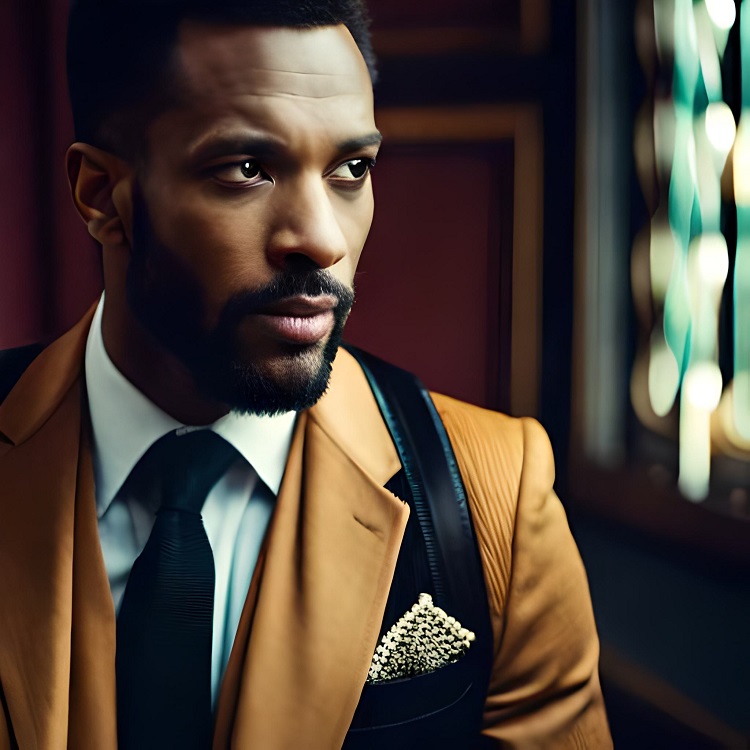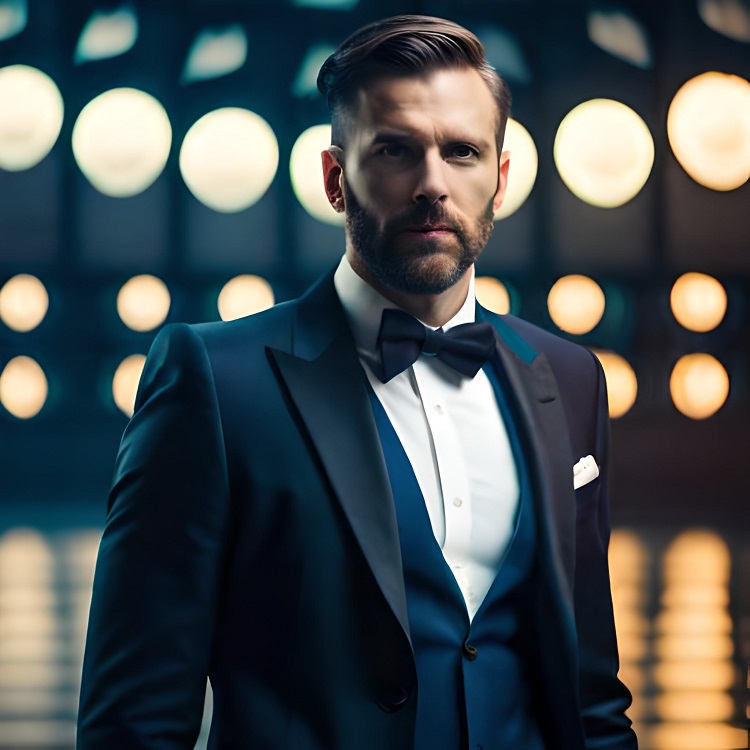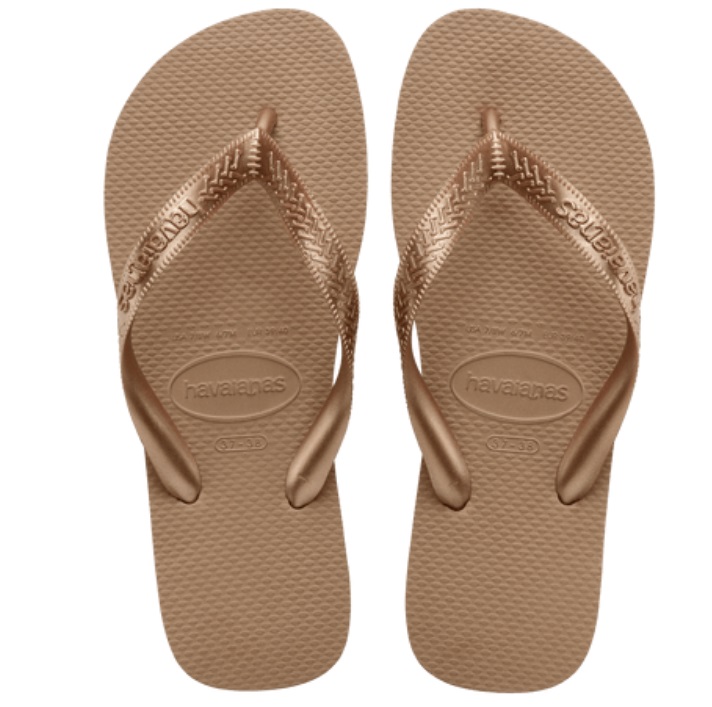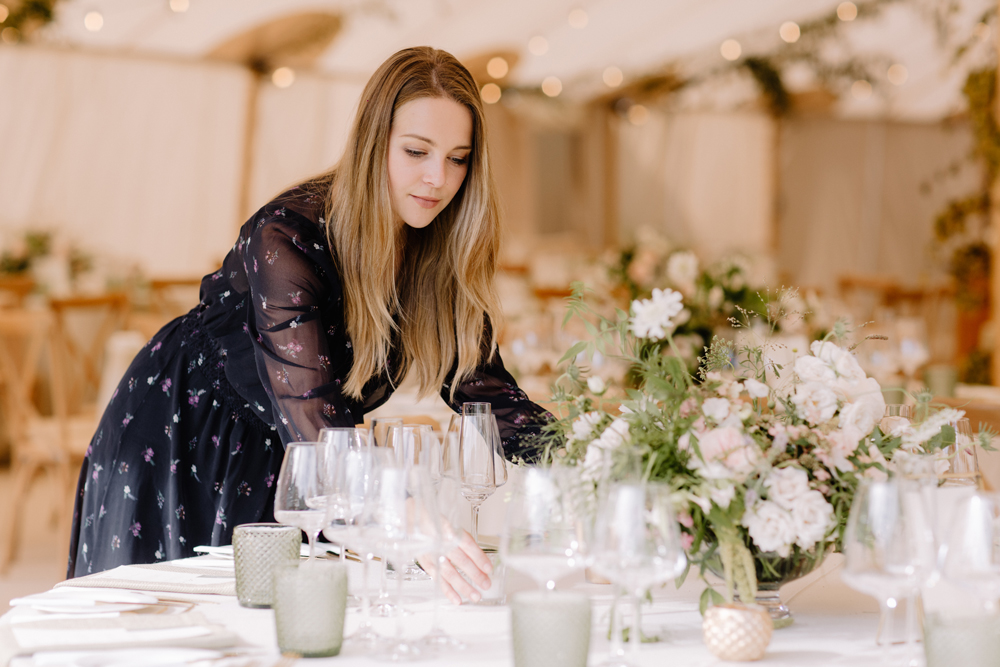The Roaring 20s were a time of great change, innovation, and style. Men’s fashion during this era was daring and bold, with new trends emerging that would shape the way men dressed for generations to come. In this blog post, we’ll take a deep dive into what made Roaring 20s menswear so unique and how you can unleash your inner Gatsby by incorporating these styles into your wardrobe today. From the iconic three-piece suit to the softer side of 20s menswear with shirts and sweaters, we’ll cover all the popular trends and styles from the era. We’ll also explore the shoes and accessories that completed the look – including popular headwear such as fedoras and accessories like pocket squares and neckwear. And finally, we’ll debunk some common misconceptions about 1920s menswear to help you get it just right. So put on your favorite jazz record, grab a cocktail, and let’s dive into the world of Roaring 20s mens fashion!
What was men’s fashion like in the Roaring 20s?
The Roaring 20s was an era of cultural and social change, reflecting on the fashion trends of that time. Men’s fashion also saw a shift towards more relaxed and comfortable clothing, with suits becoming less formal. Wide-legged trousers were in vogue, paired with bold patterns and bright colors to create a statement look. Accessories such as fedoras, suspenders, and pocket squares added to the overall aesthetic. The rise of sportswear and athleisure-inspired clothing was also notable in this decade. The fashion trends of the Roaring 20s continue to inspire modern menswear today, showcasing the lasting impact of this iconic era on men’s fashion.
Historical context
The Roaring 20s was a time of significant change in the United States, marked by economic prosperity, cultural shifts, and political upheaval. Men’s fashion during this era was no exception, with traditional styles giving way to more relaxed and casual clothing. Popular clothing items included tweed suits, knickers, and Oxford shoes, paired with accessories such as fedoras, suspenders, and pocket watches. The emergence of jazz music and the popularity of dance clubs also influenced men’s fashion during this time. Overall, the Roaring 20s was a vibrant and dynamic period in American history that left an indelible mark on men’s fashion that continues to inspire modern trends today.
Popular trends and styles
During the Roaring 20s, men’s fashion underwent a significant transformation, moving away from traditional, formal styles and towards more relaxed and expressive clothing. The era was defined by bold patterns, bright colors, and looser-fitting suits with wider lapels. Men also embraced sportswear for golfing and tennis, with knickers becoming a popular choice. Accessories such as fedoras, suspenders, and pocket watches completed the look.
This shift in fashion reflected the cultural changes of the time, which saw a growing rebellion against traditional values and greater emphasis on individuality and personal expression. With their clothing choices, men were able to showcase their unique personalities while still remaining stylish and fashionable. Today, the influence of 1920s menswear can still be seen in modern trends that prioritize comfort and self-expression over strict formality.
Suits: The epitome of Roaring 20s fashion
The 1920s saw a significant shift in men’s fashion towards more relaxed and comfortable clothing. Suits became more casual, with bold patterns, bright colors, and wide lapels. Double-breasted jackets paired with high-waisted trousers were in high demand to complete the look of a 1920s gentleman. The relaxed style allowed for easier movement, making it possible for men to dance without restrictive clothing. Accessorizing with a fedora hat, pocket square, and tie completed the signature look of the era.
The epitome of Roaring 20s fashion was embracing individuality and expressing oneself through clothing choices. With suits revolutionizing during this time period, men could stand out by showcasing their personal sense of style while still looking fashionable.
The three-piece suit
The three-piece suit was a classic style of men’s fashion in the 1920s and continues to be a popular choice today. The combination of a jacket, vest, and trousers made from wool or tweed exuded sophistication and refinement. The waistcoat added an extra layer of style and contrast when paired with contrasting trousers. Accessories like pocket watches and cufflinks completed the look, making it perfect for formal occasions or business settings. The fit of the suit was important, with a more relaxed silhouette becoming fashionable towards the end of the decade. A well-fitted three-piece suit can make any man feel like a true gentleman while paying homage to the classic style of the Roaring 20s.
Tailored jackets and popular colors
In the Roaring 20s, tailored jackets were the most fashionable choice for men looking to make a statement. These jackets featured a defined waist and broad shoulders, creating an elegant silhouette that exuded confidence and style. Popular colors for suits during this era included black, gray, and navy blue, with double-breasted options being the ultimate sign of sophistication. To complete the look, men would often accessorize with pocket squares, cufflinks, and tie bars for added flair. Overall, 1920s fashion was all about elegance, luxury, and attention to detail. The tailored jacket was no exception, serving as a cornerstone of men’s fashion throughout the decade.
Pants and trousers
Slim-fitting pants were a defining feature of 1920s men’s fashion, marking a significant shift from the looser styles of the previous decade. The Oxford Bags style exemplified this trend, with its wide legs that tapered towards the ankle. Pleated trousers were also popular, providing a relaxed yet refined look. High waistlines were common, emphasizing the waist and creating a flattering silhouette. When it came to colors, traditional browns and grays remained popular, but bolder hues like green and blue also made an appearance. Matching pants to the suit jacket was still considered a must for formal occasions, ensuring that men looked impeccably dressed from head to toe.
Shirts and Sweaters: The softer side of 20s Menswear

The 1920s was an era of transformation, and this was reflected in men’s fashion choices. The softer side of 20s menswear featured a variety of stylish and comfortable shirts and sweaters made from lightweight materials like silk and cotton. Dress shirts often came with bold patterns, stripes, or checks that added a touch of personality to any outfit. Sweaters were also popular, ranging from cardigans to pullovers, and could be worn on formal or casual occasions.
Layering was another common trend during this time period. Men would often wear dress shirts with vests or cardigans for added warmth and style. The combination of different fabrics and textures created a unique look that embodied the elegance and sophistication of the Roaring Twenties. With soft shirts and cozy sweaters, men could showcase their personal style while staying comfortable and fashionable throughout the day.
Soft shirts with attached collars
Soft shirts with attached collars were a popular trend in menswear during the Roaring 20s. These shirts were made of lightweight materials such as cotton or linen and featured a detachable collar that could be changed to suit different occasions. The soft collar gave the shirt a more casual look and was often worn with a bow tie or no tie at all.
Apart from their comfort, soft shirts with attached collars also helped men save money in the long run, as they did not have to buy new shirts every time they wanted to change their style. It was also easier to switch out the collar for cleaning purposes, which made them practical for everyday wear. In addition, these shirts could be worn with sweaters or jackets for added warmth during colder months. Overall, the soft shirt with an attached collar was a versatile and stylish addition to any man’s wardrobe during the Roaring 20s.
Popular sweater styles
Popular sweater styles were an essential part of men’s fashion during the Roaring 20s. As the popularity of sweaters rose, so did the variety of styles available, with sleeveless V-neck sweaters, cardigans, and pullovers with bold patterns or stripes becoming particularly fashionable. Many men paired their sweaters with collared shirts and ties for a more formal look, while others opted to wear them alone for a casual yet stylish outfit. Materials such as wool and cotton were commonly used for sweaters during this time period, providing both warmth and comfort.
The versatility of sweaters made them a popular choice among men in the 1920s. They were perfect for layering with dress shirts or wearing alone as a statement piece. Men could choose from various styles and materials to express their personal style, making sweaters an integral aspect of 20s menswear that has continued to remain fashionable today.
Shoes and Accessories: Completing the look
Completing your 1920s-inspired look goes beyond just picking out the right suit and shirt. Shoes and accessories play a crucial role in tying everything together. Classic Oxford shoes are always a safe bet, but if you’re looking for something more daring, consider two-tone spectator shoes for an added touch of glamour. Don’t forget to top off your outfit with a fedora or newsboy cap to add sophistication and give off that old Hollywood vibe. Accessorize further with suspenders, tie bars, and pocket squares to really polish off your look. Each item contributes to the overall aesthetic, making it important to choose pieces that match well together. By selecting the perfect shoes and accessories, you can elevate your 1920s-inspired outfit from good to great.
Dress shoes as the default
When it comes to formal events, dress shoes are the go-to option for men’s footwear. During the Roaring 20s, popular styles included wingtip, oxford, and brogue shoes. These classic styles remain a staple in men’s fashion today and can be paired with a suit or trousers for an elegant look. However, it’s important to remember that not all dress shoes are created equal. When shopping for the perfect pair of dress shoes, pay attention to details such as the color and material to ensure they complement your outfit seamlessly. Additionally, matching your shoe color to your belt color is essential for a polished appearance that will leave a lasting impression on those around you.
Popular headwear such as fedoras
Accessories like hats can elevate any outfit, and the fedora was a popular choice in the 1920s. Made from materials like wool, tweed, and straw, they provided both style and functionality to men’s fashion. Fedoras were versatile accessories that could be paired with both casual and formal outfits, making them a must-have for any man’s wardrobe.
In addition to fedoras, there were other popular headwear options during the Roaring 20s including newsboy caps and bowler hats. These accessories helped complete the overall look of a gentleman’s outfit. By adding suspenders, pocket squares, and cufflinks to their attire, men could create a polished appearance that exuded sophistication and style.
Popular accessories including pocket squares and neckwear
Accessories like pocket squares and neckwear were essential components of men’s fashion during the Roaring 20s. Pocket squares were a stylish way to add a pop of color or pattern to a suit jacket, while bow ties and neckties were crucial for completing formal outfits. Suspenders were also popular accessories during this era, often worn instead of belts.
However, it wasn’t just about functionality – these accessories added an element of sophistication and elegance to men’s fashion. A classic pair of two-tone spectator shoes paired with a matching pocket square and necktie could elevate any outfit. Additionally, hats like fedoras or newsboy caps were also commonly worn during this time period and served as both practical headwear and fashionable accessories. By carefully selecting the right accessories, men in the 1920s could make a statement with their fashion choices that still resonates today.
Formal Wear: Black tie events in the 1920s
The 1920s saw the rise of formal wear for men, including the iconic black tie attire. While it may seem like a simple outfit, attention to detail is crucial in achieving an authentic look. The black tie dress code includes a tuxedo, dress shirt, bow tie, and formal shoes. Accessories such as cufflinks, pocket squares, and boutonnieres were also popular during this time. When choosing your black tie ensemble, consider the fit and fabric choice to ensure a polished appearance.
To truly embody the spirit of the Roaring 20s, don’t be afraid to incorporate vintage elements into your outfit. A classic fedora or newsboy cap can add a touch of personality to your formal look. And don’t forget that morning and evening wear were also popular for formal events during this time period. With a little attention to detail and some creative flair, you can achieve an authentic Gatsby-inspired look that will turn heads at any black tie affair.
Morning and evening wear for formal events
Morning and evening wear for formal events were a significant part of men’s fashion in the Roaring 20s. Morning wear typically featured a black tailcoat, gray striped trousers, and a light-colored waistcoat. It was worn for daytime events such as weddings, ceremonies, or races. On the other hand, evening wear was more formal and included a black tuxedo jacket, black trousers, and a white dress shirt with a wingtip collar. It was suitable for nighttime events such as balls, operas or dinners.
Accessories such as cufflinks, pocket squares, and bow ties played an essential role in completing the look. Men’s formal shoes during this time period were typically made of patent leather and had pointed toes. When it comes to formal events, attention to detail is crucial; therefore, it is necessary to pay attention to the fit and fabric choice of your outfit. Incorporating vintage elements can add authenticity to your Roaring 20s inspired look while still being fashionable today.
Debunking Misconceptions
It’s time to clear up some common misconceptions about 1920s menswear. Contrary to popular belief, the fashion of this era was not just about flamboyant suits and fedoras. In fact, it included casual wear like polo shirts and sweaters that were designed for comfort and practicality. Additionally, the 1920s saw a shift towards softer fabrics and looser fits, resulting in a unique blend of European and American styles. It’s important to recognize that men’s fashion during this time was influenced by various factors, including social mobility, technological advances, and changing cultural norms. By acknowledging these misconceptions, we can appreciate the full range of style possibilities available in the roaring 20s.
Clearing up common misconceptions about 1920s menswear
Contrary to popular belief, 1920s menswear wasn’t all about flashy and extravagant suits. While suits were still the norm for most occasions, there were a few notable differences in style. The rise of sports and leisure activities led to the popularity of more casual clothing such as sweaters and knickers. As a result, accessories such as fedoras and suspenders also became fashionable during this era. The trend was toward comfortable clothing with softer fabrics and looser fits becoming increasingly popular.
Men’s fashion in the 1920s was influenced by both European and American trends, resulting in a unique blend of styles that reflected the changing times and societal norms. Overall, 1920s menswear was much more than just flamboyant suits and fedoras, but rather a reflection of the evolving cultural landscape.
The Roaring 20s was a decade that marked a turning point in men’s fashion. The trends and styles of that era are still celebrated today, with many modern-day fashion designers drawing inspiration from the 20s. To unleash your inner Gatsby, you need to pay attention to details and accessorize well. From three-piece suits and tailored jackets to soft shirts and popular sweater styles, there is something for every man who wants to make a statement.
Don’t forget about shoes and accessories either! Dress shoes, fedoras, pocket squares, and neckwear are all essential elements of a complete look. And if you’re attending a black-tie event, remember to dress appropriately with morning or evening wear. So why not try incorporating some of these Roaring 20s fashion trends into your wardrobe? You might be surprised at how good you’ll look and feel.



